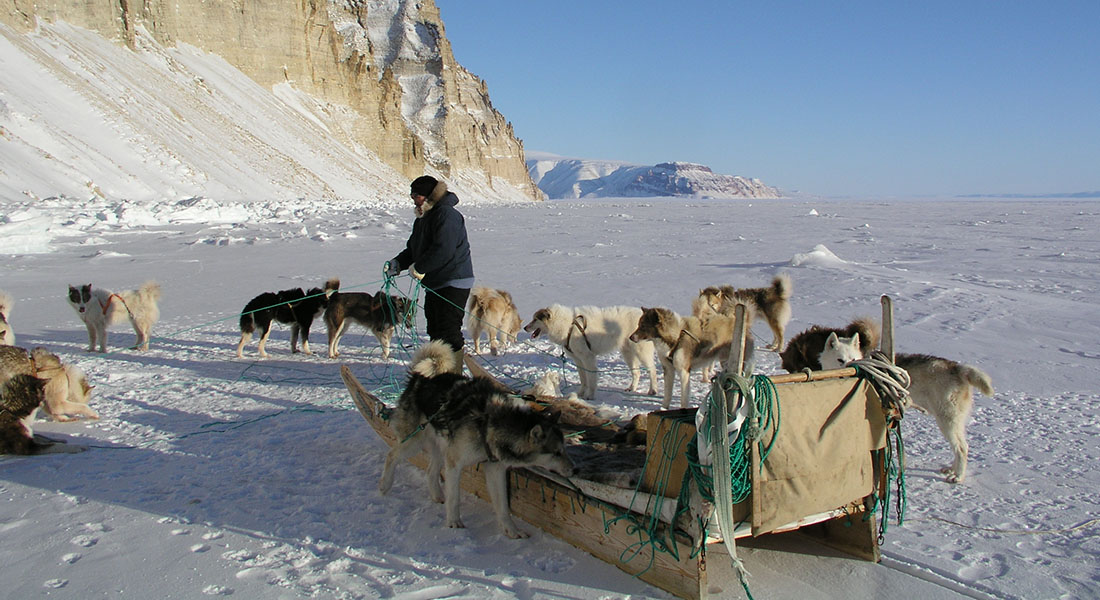Arctic Inuit with a faulty gene could control their diabetes with an hour of daily exercise
An hour of hiking with hunting gear may be enough to help control blood glucose levels in Arctic Inuit with a faulty copy of the TBC1D4 gene, which increases their risk of type 2 diabetes. The findings, made by scientists in Denmark and Greenland, open the door to lifestyle precision medicine for the population, with the potential to help thousands across the Arctic region.

Precision medicine may help Greenlanders with a common genetic variation that limits their ability to control their blood glucose levels and increases their risk of type 2 diabetes. Around four percent of the Greenlandic Inuit population carry two copies of the genetic variant. Now, scientists from Denmark and Greenland have discovered a silver lining – a simple exercise intervention seems to stave off the negative health effects.
“We are very excited by the finding, which could improve the lives of many people living with type 2 diabetes in the Arctic region,” says Professor Torben Hansen from the Novo Nordisk Foundation Center for Basic Metabolic Research (CBMR) at the University of Copenhagen. The study – which was published in Diabetologia – involved a close collaboration between the Hansen Group and the University of Greenland, the National Institute of Public Health at the University of Southern Denmark, and Steno Diabetes Center Copenhagen.
An hour of hunting with hunting gear does the trick
Greenland, with a small population of just 57.000, has experienced a dramatic rise in rates of type 2 diabetes over the past 25 years. Reporting in Nature in 2014, researchers from the same collaboration identified the faulty variant of the TBC1D4 gene in the Greenlandic Inuit population, which makes carriers less able to control their blood glucose levels, resulting in type 2 diabetes. Left untreated, the carriers of the gene mutation might be at increased risk of nerve damage, blindness and heart disease.
The latest study set out to study whether physical activity can help carriers with the faulty gene to control their blood glucose levels. They drew on data from a population cohort of 2.655 Greenlandic Inuit, which was collected as a general health survey of the Greenland population. The data included information on their variant of the TBC1D4 gene, physical activity collected by a questionnaire and a wearable device and blood glucose levels that were measured two hours after consuming a sugary drink.
They discovered that carriers with two copies of the gene merely needed to carry out moderate daily physical activity to reduce glucose levels to only slightly elevated levels. In a real-life setting, this equates to an hour of hiking with hunting gear.
“Our finding opens the door to lifestyle precision medicine, in the form of physical activity, that might benefit the 3,8 percent of the Arctic Inuit population who carry two copies of the faulty TBC1D4 gene,” says Postdoc Theresia Schnurr from CBMR.
A positive outlook for thousands of Arctic Inuit
The main limitation of the study is that it was limited to the analysis of the general health survey data. The scientists propose an exercise-intervention trial of Greenlanders to quantify the clinical impact of physical activity in carriers of the faulty gene, with which to recommend personalised treatment.
However, given the initial findings and the prevalence of the faulty TBC1D4 gene in the Inuit Arctic population, the findings present a positive outlook for thousands of type 2 diabetes across the Arctic region.
Read the full article in Diabetologia: Physical activity attenuates postprandial hyperglycaemia in homozygous TBC1D4 loss-of-function mutation carriers
Contact
Professor Torben Hansen
Novo Nordisk Foundation Center for Basic Metabolic Research (CBMR)
University of Copenhagen
+45 35337129
torben.hansen@sund.ku.dk
Professor Marit Eika Jørgensen
Steno Diabetes Center Greenland
3900 Nuuk, Greenland
+299 531401
maej@peqqik.gl
